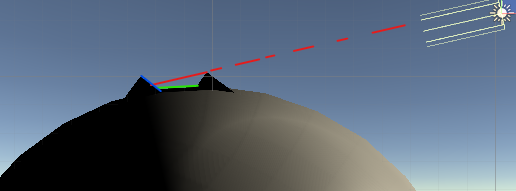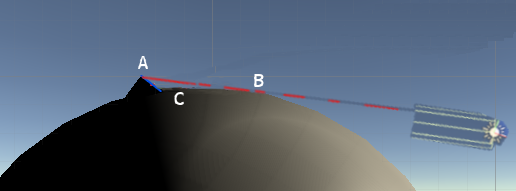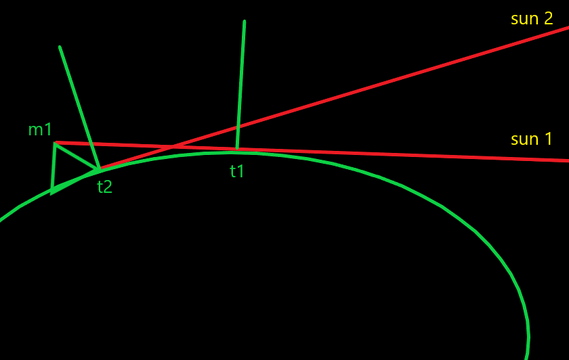A couple weeks ago Randall asked a guest to explain a phenomenon with the terminator line of the earth.
If I recall the scenario was that the visible line on a mountain and nearby terrain was moving much slower than the calculated speed the terminator should be moving.
The guest (Chris Rutkowski) provided a short explanation but it seemed to me that didn't fully satisfy @Randall
I'm new to the forums but have been listening for years and I thought maybe I could help explain this apparent weirdness.
As Chris mentioned it has everything to do with the unevenness of the earths surfaces.
The fact that Randal first noticed the phenomenon while viewing a mountain is significant.
to make sure I understand exactly what was seen I will try to recreate it in words here.
Randal was looking westward toward a mountain with the sun rising in the east behind him at dawn.
the sun first struck the top of the mountain and a distinct shadow line traveled down the mountain and across the level landscape toward Randall
It travelled much slower than the 600 mi/h that Randal calculated as the speed of the terminator.
One way to think of it is that this was not the terminator but rather a shadow of another mountain further east from Randall's location.
Another way to think of it is that it was indeed the terminator but that the terminator is not a straight line.
It undulates across the landscape on average at the calculated speed if you consider the earth as a whole but locally it can go much slower or faster.
If I understand the scenario correctly the line Randall witnessed was travelling eastward toward the sun, not westward with the sun.
the un-straight-terminator theorem would indicate that sections of the terminator would jump far ahead of the rest of it to kiss a mountain top breaking off into a loop.
the small loops would then grow back eastward to rejoin the rest of the approaching terminator as the sun rises further over distant ridges.
does that make sense?
I could draw pictures if that helps but I don't have time this morning.
thanks for taking the time to read this long post
If I recall the scenario was that the visible line on a mountain and nearby terrain was moving much slower than the calculated speed the terminator should be moving.
The guest (Chris Rutkowski) provided a short explanation but it seemed to me that didn't fully satisfy @Randall
I'm new to the forums but have been listening for years and I thought maybe I could help explain this apparent weirdness.
As Chris mentioned it has everything to do with the unevenness of the earths surfaces.
The fact that Randal first noticed the phenomenon while viewing a mountain is significant.
to make sure I understand exactly what was seen I will try to recreate it in words here.
Randal was looking westward toward a mountain with the sun rising in the east behind him at dawn.
the sun first struck the top of the mountain and a distinct shadow line traveled down the mountain and across the level landscape toward Randall
It travelled much slower than the 600 mi/h that Randal calculated as the speed of the terminator.
One way to think of it is that this was not the terminator but rather a shadow of another mountain further east from Randall's location.
Another way to think of it is that it was indeed the terminator but that the terminator is not a straight line.
It undulates across the landscape on average at the calculated speed if you consider the earth as a whole but locally it can go much slower or faster.
If I understand the scenario correctly the line Randall witnessed was travelling eastward toward the sun, not westward with the sun.
the un-straight-terminator theorem would indicate that sections of the terminator would jump far ahead of the rest of it to kiss a mountain top breaking off into a loop.
the small loops would then grow back eastward to rejoin the rest of the approaching terminator as the sun rises further over distant ridges.
does that make sense?
I could draw pictures if that helps but I don't have time this morning.
thanks for taking the time to read this long post

 .
.


